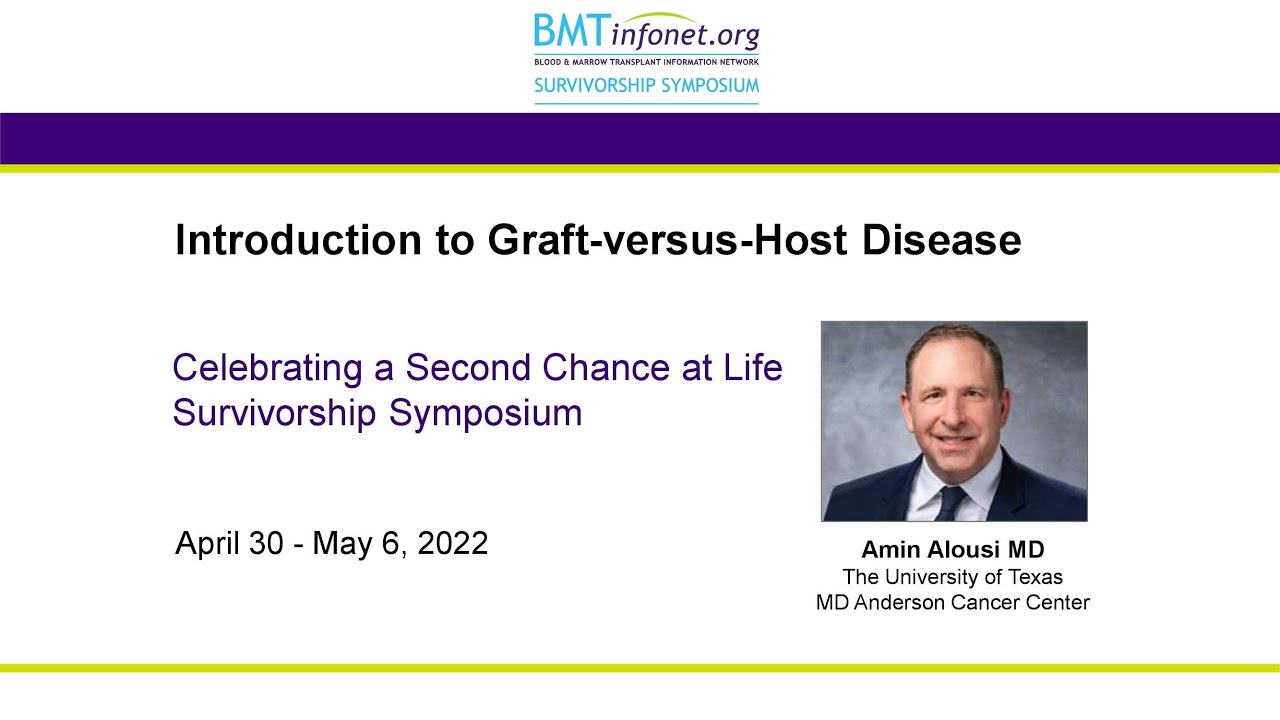Chronic Graft-versus-Host Disease
Chronic graft-versus-host disease is a common complication after a transplant using donor cells (allogeneic transplant).
Chronic GVHD is different than acute GVHD. Although it can occur at any time, it usually develops later than acute GVHD and can affect more organs and tissues.
Most cases of chronic GVHD are mild or moderate. However, 10-15 percent of patients develop symptoms that are more severe.
Patients with chronic GVHD usually require treatment for three to five years. Approximately 15 percent of patients require treatment for a longer period of time and, in rare, cases, may need life-long immunosuppressive drugs.
Risk Factors
Chronic GVHD occurs most often in patients who:
- previously had acute GVHD
- are older
- were transplanted with cells from an unrelated donor or a donor who was not a perfect match
- were transplanted with stem cells collected from the bloodstream (peripheral blood stem cells) rather than bone marrow or cord blood
- are male and received cells from a female donor
- are a male or female who received cells from a female donor who had previously borne children
Organs Affected
Chronic GVHD most often affects:
- skin and nails
- eyes
- mouth
- liver
Less frequently, chronic GVHD affects the:
- lungs
- intestines
- joints
- genitals
- muscles
- nervous system
Treatment
How your doctor manages your chronic GVHD depends on which organs and tissues are affected, the severity of the symptoms and the impact chronic GVHD is having on your daily life.
If chronic GVHD is affecting only one or two organs or tissues, you doctor may choose a localized therapy, like a skin ointment, to manage your disease.
If it is affecting many different parts of your body, or if symptoms are severe and cannot be managed by a localized therapy, your doctor may need to give you drugs that suppress your immune system (systemic therapy) such as:
- prednisone
- prednisone with cyclosporine
- prednisone with tacrolimus
- sirolimus
If your chronic GVHD does not respond to these drugs, your doctor may try other drugs such as:
- ibrutinib
- ruxolitinib
- belumosudil
- methotrexate
- mycophenolate mofetil
- sirolimus
- extracorporeal photopheresis
- low-dose interleukin-2
- abatacept
If you are diagnosed with chronic GVHD, it is important that you take your medication even when you start to feel better. Stopping your medication too early can cause your GVHD to flare up again or worsen.
Take Action!
Because chronic GVHD usually develops more than 100 days after transplant when you are no longer having weekly visits with the transplant team, it's important that you examine your body weekly for signs of GVHD.
Carefully inspect your mouth, eyes, skin, joints and genitals for any changes. Don’t ignore subtle changes. Report anything unusual to your doctor immediately.
Don’t be afraid to ask questions. If you notice a change, don’t assume it’s nothing to worry about. Ask your care team to be sure.
Watch this video about chronic GVHD
Click here to read the transcript.



